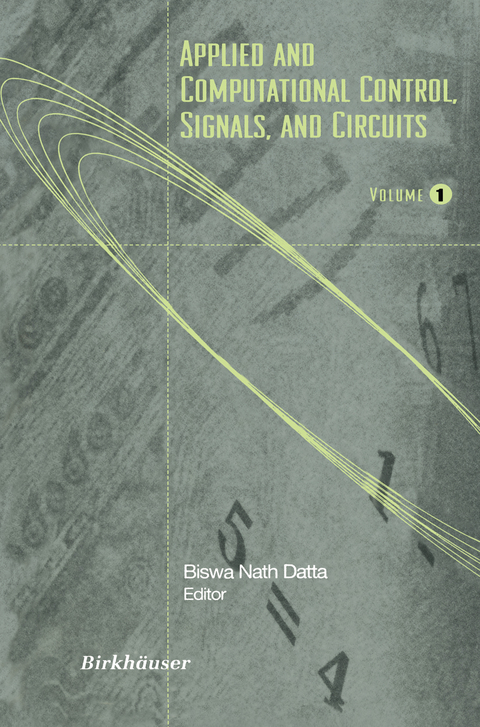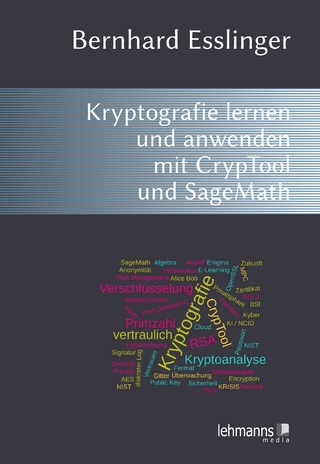
Applied and Computational Control, Signals, and Circuits
Springer-Verlag New York Inc.
978-1-4612-6822-2 (ISBN)
1 Discrete Event Systems: The State of the Art and New Directions.- 1.1 Introduction.- 1.2 DES Modeling Framework.- 1.3 Review of the State of the Art in DES Theory.- 1.4 New Directions in DES Theory.- 1.5 Decentralized Control and Optimization.- 1.6 Failure Diagnosis.- 1.7 Nondeterministic Supervisory Control.- 1.8 Hybrid Systems and Optimal Control.- References.- 2 Array Algorithms forH2andH?Estimation.- 2.1 Introduction.- 2.2H2Square Root Array Algorithms.- 2.3HO?Square Root Array Algorithms.- 2.4H2Fast Array Algorithms.- 2.5HO?Fast Array Algorithms.- References.- 2.A Unitary and Hyperbolic Rotations.- 2.B Krein Spaces.- 3 Nonuniqueness, Uncertainty, and Complexity in Modeling.- 3.1 Introduction.- 3.2 Issues of Models and Modeling.- 3.3 Nonuniqueness.- 3.4 Uncertainty.- 3.5 Complexity.- 3.6 Formulation of Model Set Identification.- 3.7 Learning or Optimization?.- 3.8 Conclusion.- References.- 4 Iterative Learning Control: An Expository Overview.- 4.1 Introduction.- 4.2 Generic Description of ILC.- 4.3 Two Illustrative Examples of ILC Algorithms.- 4.4 The Literature, Context, and Terminology of ILC.- 4.5 ILC Algorithms and Results.- 4.6 Example: Combining Some New ILC Approaches.- 4.7 Conclusion: The Past, Present, and Future of ILC.- References.- 5 FIR Filter Design via Spectral Factorization and Convex Optimization.- 5.1 Introduction.- 5.2 Spectral Factorization.- 5.3 Convex Semi-infinite Optimization.- 5.4 Lowpass Filter Design.- 5.5 Log-Chebychev Approximation.- 5.6 Magnitude Equalizer Design.- 5.7 Linear Antenna Array Weight Design.- 5.8 Conclusions.- References.- 5.A Appendix: Spectral Factorization.- 6 Algorithms for Subspace State-Space System Identification: An Overview.- 6.1 System Identification: To Measure Is To Know’.- 6.2 Linear SubspaceIdentification: An Overview.- 6.3 Comparing PEM with Subspace Methods.- 6.4 Statistical Consistency Results.- 6.5 Extensions.- 6.6 Software and DAISY.- 6.7 Conclusions and Open Research Problems.- References.- 7 Iterative Solution Methods for Large Linear Discrete Ill-Posed Problems.- 7.1 Introduction.- 7.2 Krylov Subspace Iterative Methods.- 7.3 Tikhonov Regularization.- 7.4 An Exponential Filter Function.- 7.5 Iterative Methods Based on Implicitly Defined Filter Functions.- 7.6 Toward a Black Box.- 7.7 Computed Examples.- References.- 8 Wavelet-Based Image Coding: An Overview.- 8.1 Introduction.- 8.2 Quantization.- 8.3 Transform Coding.- 8.4 Wavelets: A Different Perspective.- 8.5 A Basic Wavelet Image Coder.- 8.6 Extending the Transform Coder Paradigm.- 8.7 Zerotree Coding.- 8.8 Frequency and Space-Frequency Adaptive Coders.- 8.9 Utilizing Intra-band Dependencies.- 8.10 Future Trends.- 8.11 Summary and Conclusion.- References.- 9 Reduced-Order Modeling Techniques Based on Krylov Subspaces and Their Use in Circuit Simulation.- 9.1 Introduction.- 9.2 Reduced-Order Modeling of Linear Dynamical Systems.- 9.3 Linear Systems in Circuit Simulation.- 9.4 Krylov Subspaces and Moment Matching.- 9.5 The Lanczos Process.- 9.6 Lanczos-Based Reduced-Order Modeling.- 9.7 The Arnoldi Process.- 9.8 Arnoldi-Based Reduced-Order Modeling.- 9.9 Circuit-Noise Computations.- 9.10 Concluding Remarks.- References.- 10 SLICOT—A Subroutine Library in Systems and Control Theory.- 10.1 Introduction.- 10.2 Why Do We Need More Than MATLAB Numerics?.- 10.3 Retrospect.- 10.4 The Design of SLICOT.- 10.5 Contents of SLICOT.- 10.6 Performance Results.- 10.8 Concluding Remarks.- References.- 10.A Contents of SLICOT Release 3.0.- 10.B Electronic Access to the Library and Related Literature.
| Zusatzinfo | XXI, 539 p. |
|---|---|
| Verlagsort | New York |
| Sprache | englisch |
| Maße | 155 x 235 mm |
| Themenwelt | Informatik ► Theorie / Studium ► Algorithmen |
| Informatik ► Weitere Themen ► Hardware | |
| Technik ► Elektrotechnik / Energietechnik | |
| ISBN-10 | 1-4612-6822-2 / 1461268222 |
| ISBN-13 | 978-1-4612-6822-2 / 9781461268222 |
| Zustand | Neuware |
| Informationen gemäß Produktsicherheitsverordnung (GPSR) | |
| Haben Sie eine Frage zum Produkt? |
aus dem Bereich


